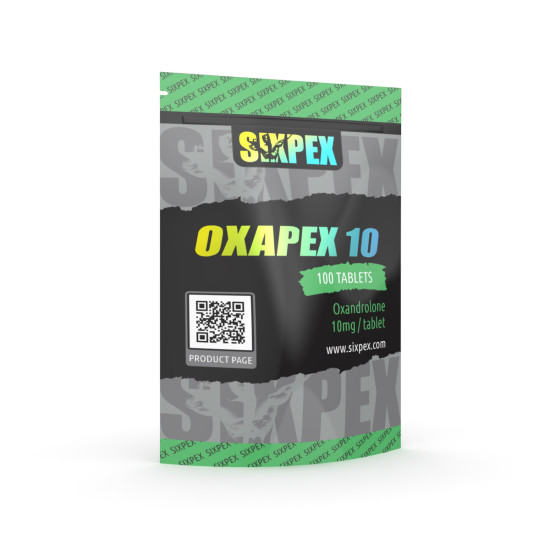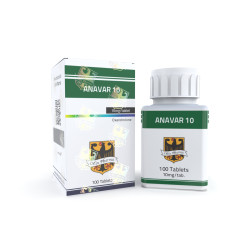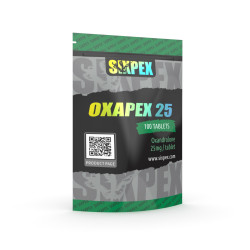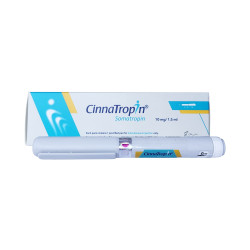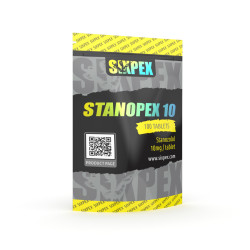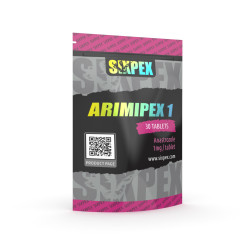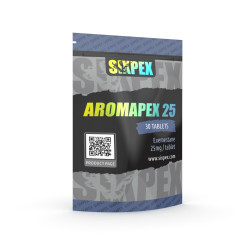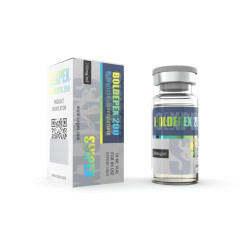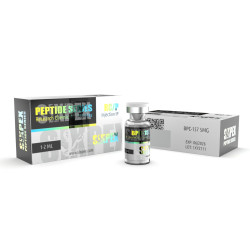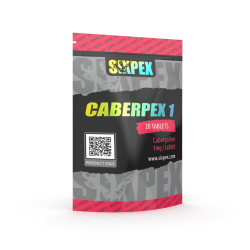The Comprehensive Guide to Oxandrolone Usage and Dosages in Bodybuilding
1. Introduction to Oxandrolone
Oxandrolone is a synthetic anabolic steroid within the subgroup of dihydrotestosterone derivatives. Developed during the 1960s, it was initially marketed under the trade name Anavar. The product was used solely for the treatment of various medical conditions and disorders, including cachexia, weight loss, hormone replacement therapy, and osteoporosis. Later on, virtually all of Anavar's therapeutic indications were discontinued and supplanted by alternative approaches, except for the treatment of severe burns. Thus, the manufacturing of Anavar was eventually halted in the early 1990s. Despite being withdrawn from the pharmaceutical market, oxandrolone and its numerous copies remain widely available in the black market and continue to be utilized by the bodybuilding community for physique and performance enhancement purposes. In fact, Anavar is currently one of the most counterfeited steroids on the market, frequently mislabeled and undersubstituted due to its desirability and perceived scarcity. Oxandrolone began circulating as a nutritional supplement in the United States from the early 2000s onward, as well as legal, high-quality over-the-counter medicines.
Oxandrolone stands out as an exceptionally exclusive compound compared to the vast majority of other anabolic androgenic steroids due to its highly superior anabolic to androgenic ratio. It has been endorsed, or at least subtly supported, by professional bodybuilders, competitive athletes, models, personal trainers, and fitness experts to yield fast, significant results. There is an indelible need to reach out to the bodybuilding community with the objective and scientifically proven information to responsibly employ oxandrolone as a means to an end. This writing emphasizes both theoretical knowledge and practical experiences, as well as a comprehensive, up-to-date take on the drug. It also puts the theories into literal context, primarily directed towards athletes, bodybuilding hobbyists, fitness enthusiasts, trainers, dietitians, experts, and anyone who may be interested in, or is already, using oxandrolone.
2. Mechanism of Action and Benefits in Bodybuilding
Unlike plain fatty acids, ester fat is soluble even in cold, due to which it has a processed mechanism of impact on the human cardiovascular system. Moreover, not only can an overdose of Oxandrolone and its closest relatives cause a significant decrease in LDL and VLDL cholesterol, but there is also a clinically confirmed positive correlation between using Oxandrolone, HIIT, and lipid profile improvement. As popular bodybuilders claim, and their photos with improved statistical indicators regarding fat percentage and muscle profile prove it, Oxandrolone is useful in elevating the sentiment of sportsmen, reinforcing strength, and endurance. Medically, Oxandrolone was designed for treating osteoporosis, sarcopenia, and infarction. It can bolster muscular hypertrophy and prevent muscle cachexia from emerging, and can also help those who have had bone or muscle accidents. The main element in the practical application of Oxandrolone, either in the sports world or in a clinical environment, is that it hardly destroys normal body functions. What is more, there is little retention of water compared to other steroids, and the danger of symptoms related to the so-called estrogenic belly is small. It is utilized both as a final substance and as a suitable stand-in for other anabolic agents in Pre-WGT steroid periods. This is due to its fat-burning and anabolic traits. Oxandrolone cuts subcutaneous adipose tissues; bulky stomach-building steroids do not assimilate and further add water. Thus, it is used to obtain a clear, easily identifiable, and more defined muscle profile. In addition, it also compensates for relatively little progress in muscle mass, either during use or during periods of recuperation.
3. Optimal Dosages and Cycling Strategies
Dosage and cycling strategies for AAS usage are key topics for discussion among advanced bodybuilders. In essence, all substances should be used at minimum dosages that are capable of producing the desired result in order to minimize the risk of possible side effects. It is also important for athletes to be aware of the individual dose that can be effective for them while ensuring that side effects are minimized. As we have already noted, Oxandrolone is not considered to be the most toxic AAS on the market due to its alkaline structure. For this reason, dosages can be described in ranges. At the same time, potential users should remember that during research studies, Oxandrolone was used at dosages ranging from 100 to 500 mg per day. The same applies to the duration of usage. Low dosages might be more appropriate in order to observe the development of the body’s response to the drug over a longer trial period.
Individual dosing of Oxandrolone should be scaled according to the level of AAS experience. The following dosage ranges are suitable for both male and female athletes: (1) Beginners: 20–40 mg/day; (2) Intermediate users: 40–80 mg/day; (3) Advanced athletes: 80 mg/day and more. As we noted above, Oxandrolone is one of the AAS that can be recommended for female users. In principle, women can use low dosages of almost all AAS due to their naturally lower levels of testosterone. This also applies to Oxandrolone. However, not all recommended dosage ranges, especially for beginner athletes, are suitable for women. It is better to use the following doses: (1) Beginners: 10–20 mg/day; (2) Intermediate users: 20–40 mg/day; (3) Advanced female athletes: 40 mg/day and more. In conclusion, it should be noted that experienced athletes and potentially beginners have already had the chance to get acquainted with the concept of 'stacking' and can adjust their own usage strategy. In this case, Oxandrolone can be combined with other AAS, GR, peptides, or PPAR-γ agonists in order to achieve a stronger overall effect. Given the high anabolic properties of Oxandrolone, a maximum effect can be achieved via a similar approach more often than through increasing the dosage. It is very important to remember that to avoid related risks, a cycle cannot be arbitrarily constructed, and careful monitoring must be performed during usage on an ongoing basis. The duration of a cycle, and whether post-cycle therapy needs to be performed after discontinuing the substance, should be adapted to the dosage taken.
4. Potential Side Effects and Mitigation Strategies
Potential Side Effects and Mitigation Strategies
Just like with any other anabolic steroid, Oxandrolone comes with a virtual certainty of numerous potential side effects. Many are relatively mild and easily manageable, yet if ignored, they can lead to severe health damage or other, more problematic side effects cropping up. As with testicular atrophy, just because it's mild and, in virtually all cases, temporary, doesn't mean it's not a very real side effect.
There are numerous side effects associated with the use of Oxandrolone, and a responsible and well-informed user will carefully consider them. Using Oxandrolone irrespective of their occurrence and their potential consequences is simply irresponsible. This, however, does not mean that Oxandrolone is not a good investment, but that using it comes with certain risks attached, albeit rare. As mentioned earlier, monitoring and testing are advisable to detect any potential problems early on. Users experiencing any side effect of Oxandrolone should cease usage and, if related to adverse health conditions, should follow up with their healthcare provider.
Mitigating Oxandrolone-Related Side Effects
In just about all cases, it's best to deal with the root cause of an Oxandrolone side effect. However, there are certain ways to help manage them in the short term before the root cause can be addressed. If the maximum tolerable dose is close, reducing the daily amount may help manage nausea or vomiting. Taking Oxandrolone with food can also reduce the effect. For some, supplementing with TUDCA can help with liver side effects to an extent, reducing liver function markers at less than half of the effective dose. In regard to overdoses, regularly keep vitamins and supplements in check to reduce the risk of supplement toxicity. An important part of Oxandrolone use is to nourish the body properly to improve results. Staying hydrated during an Oxa-only cycle is also a must. Be aware of heart health, particularly if attended to by long-term steroid usage. Keep in regular contact with a healthcare provider about your own personal health and also the use of Oxandrolone. Spreading the required dosage throughout the week expedites a buildup in the bloodstream and is more effective if this type of dosage is followed.
5. Conclusion and Future Directions
This guide has provided bodybuilders and users with a comprehensive reading on Oxandrolone use and dosages in bodybuilding. It emphasized the dual nature of building the strength and size of clients in bodybuilding and muscle dysmorphia clinics. So, while athletes may be concerned with increasing muscular strength and building muscle size for functionality, those with muscle dysmorphia may be more concerned about changing the shape and size of their muscles. Therefore, further work is required in order to provide appropriate dosages for differing populations in bodybuilding. Similarly, a thorough concession of the negative effects of using anabolic steroids, such as Oxandrolone, is necessary for a well-rounded comprehensive argument. It is recognized that the international reach of bodybuilding and fitness means that some athletes outside of a clinical setting will engage with anabolic agents to enhance their physique.
The use of anabolic agents, and the doses these individuals use, in the non-clinical setting is largely unknown. This issue requires thorough investigation as to the effects, side effects, and long-term risks individuals in bodybuilding and fitness gyms, pushing for improved aesthetics or body image, could face. However, it is hoped that this research will be useful in highlighting potential risks for users, as a form of harm minimization while exposure is reported. This work also reflects shifting attitudes towards drug use and doping across sports, with an increasing number of sports rejecting outright bans in order to promote athlete healthcare. Future research into natural and lawful products or lifestyle changes that could offer performance enhancement would also be fruitful.

